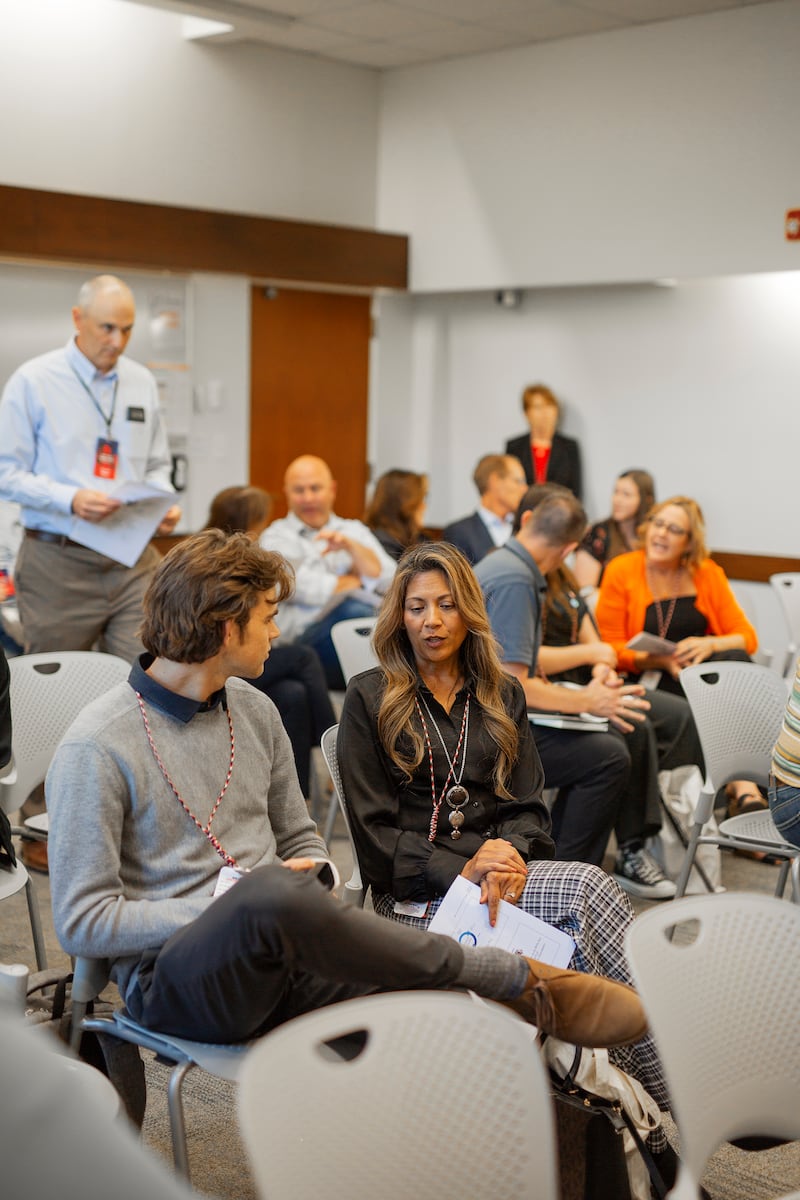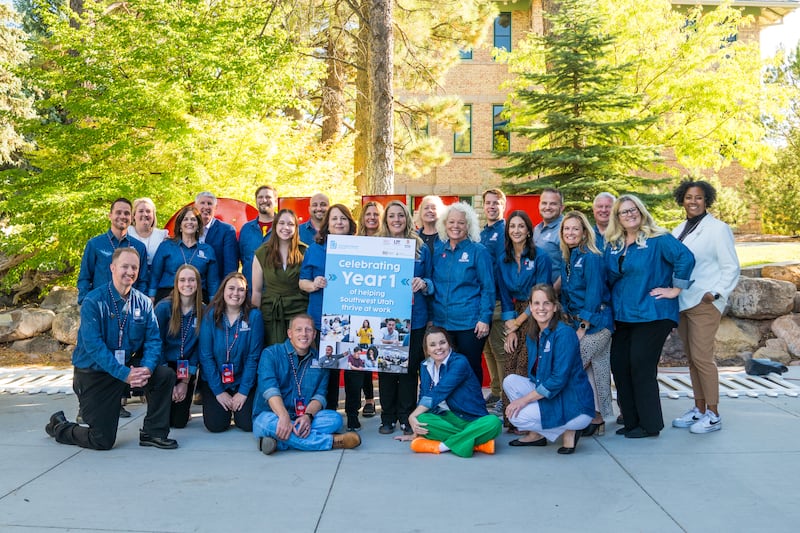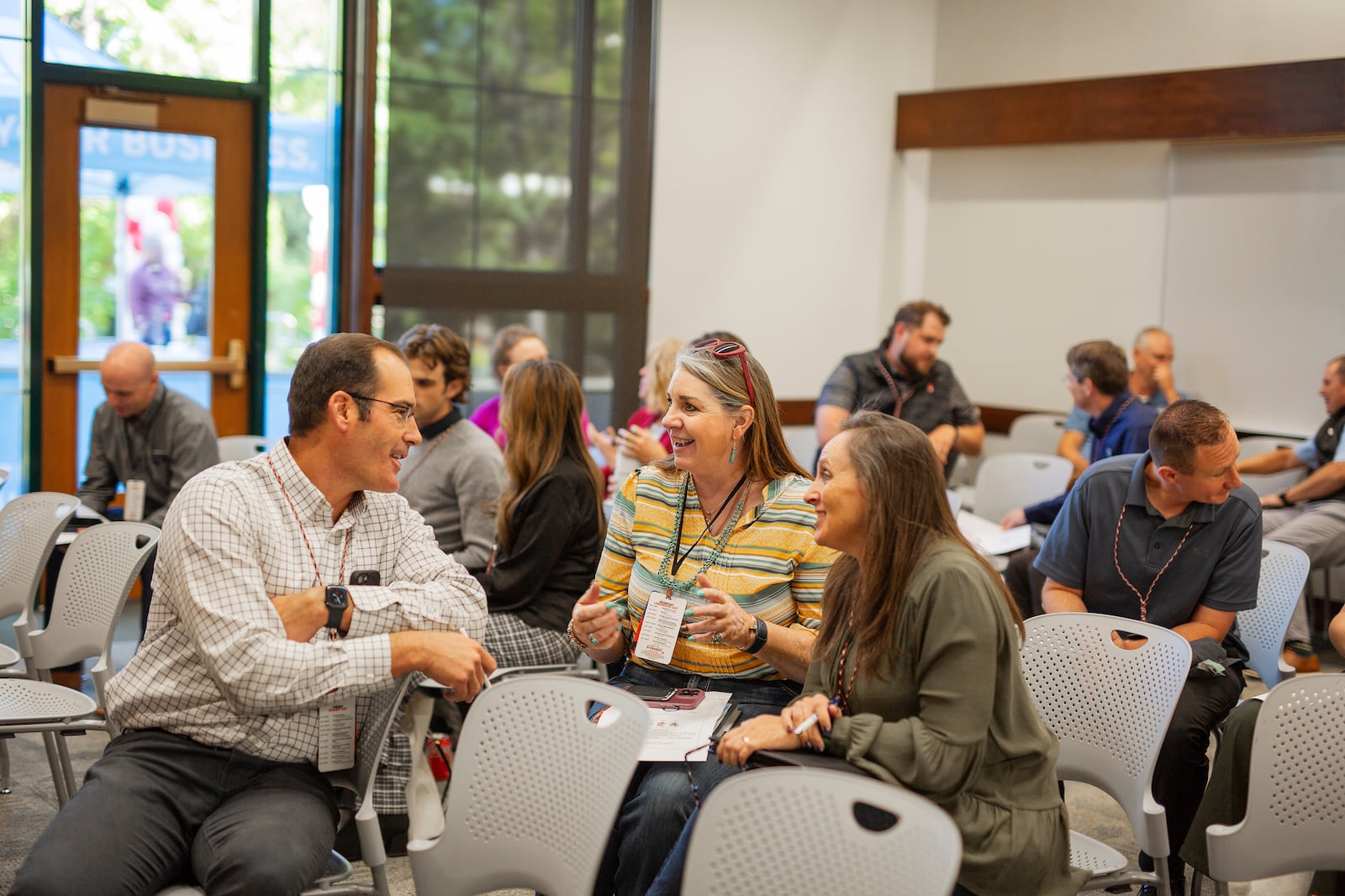This story appears in the February issue of Utah Business. Subscribe.
Toward the end of the COVID-19 pandemic, the Cedar City-Iron County Economic Development Committee approached Melynda Thorpe to help investigate a problem. Several employers reported having difficulty finding workers to fill positions and faced communication problems with existing employees.
Thorpe, the assistant VP of workforce and educational opportunity at Southern Utah University, created a survey in collaboration with two higher education partners from Utah Tech University that received responses from more than 190 employers. The findings concluded that employers were facing a significant employee deficit and skills gaps, including soft skills like communication, customer service and dependability.
Shortages and communication struggles aren’t unique to southern Utah communities — they reflect the nation’s larger labor struggle to meet hiring demands and skills requirements. To combat and get ahead of the problem, Utah organizations are pioneering new ways to build talent pipelines and equip employers, students and educators to create a strong workforce.

A talent reshuffling
In 2021, more than 47 million workers quit their jobs. Another 50 million followed suit the next year, leading to what many now call “The Great Resignation.” Three years later, industries grapple with what some have labeled “The Great Reshuffle.” Prolonged vacancies, increased time-to-hire and significant skills gaps led to a 17-year high in talent shortage in 2023, according to ManpowerGroup.
Quit rates remain high as workers shuffle from job to job, seeking work-life balance, increased compensation, strong company culture and flexibility. According to the ManpowerGroup data, rising hiring demand has pushed more employers to consider overseas hires, especially in the IT and communications services industries.
Despite creating a favorable landscape for businesses and individuals, Utah hasn’t escaped the labor shortage. With 44 available workers per 100 jobs, the state ranks as one of the most severe on the U.S. Chamber of Commerce’s Worker Shortage Index. Though labor force participation has increased since the pandemic, Utah has not recovered and has fewer workers available than pre-pandemic.
Much of the skills gap dilemma can be attributed to rapidly evolving technology and a changing workforce. As baby boomers retire, Gen Zers taking over the workforce have different priorities. Thorpe’s research found employers were struggling to retain talent because they couldn’t figure out how to communicate with these new workers.
“They were blaming the younger generation, but the younger generation of the workforce was also blaming the employer for not being communicative, for not being responsible, for asking them to work outside of work hours,” Thorpe says.
Purdue Global research reports that baby boomers are professionally motivated by company loyalty, teamwork and duty. Gen Z prefers individuality, diversity, creativity and personalization. Gen X and millennials fall somewhere in the middle; top motivators include work-life balance, the quality of their manager and unique work experiences.
Improving communication
Thorpe’s research, combined with the growth of high-wage employers coming to southern Utah and its undertrained workforce, led to the creation of FutureReady Utah, a five-year effort to elevate the region’s workforce in prime industries: computer technology, aerospace, advanced manufacturing, healthcare, finance and tourism/hospitality.
Two economic districts and three higher education institutions — Southern Utah University, Utah Tech University and Snow College — joined forces to create job pathways and training to meet immediate and long-term demand.
The team met with the Economic Development Administration to secure funding. Officials recognized that, without intervention, southwestern Utah residents may face displacement as high-wage employers move in.
FutureReady Utah has just concluded its first full year, and initial efforts are promising. Tackling the communication gap between existing employers and employees was high on the priority list. So far, feedback has been positive.
“The enhancement of communication has been huge,” Thorpe says. “Having plans and tools for team development, motivation and incentives — [as well as] understanding Generation Z and their expectations — always comes back in feedback as very eye-opening.”
The program goes on the road and trains business leaders in small towns and communities. Knowing that resources can be hard to come by in small towns, workshops are held all over the region and virtually broadcast to anyone interested.
“In the first year of the program, we were able to introduce the program to 1,213 businesses,” Thorpe says.
Those who complete a year’s worth of training become FutureReady-certified employers or worksites, receive a certificate from the governor’s office, and obtain preferred employer status from the Department of Workforce Services. Fourteen employers achieved this in 2024, with 54 more working toward certification.
FutureReady Utah’s program has ongoing admission, meaning employers can start anytime. Thanks to funding, it’s entirely free to employers. Thorpe says they’ve seen interest from businesses of all sizes.
“The participants are surprising us. It’s not just mom-and-pop business owners; it’s also the nonprofit organizations in these communities,” Thorpe says. “It’s manufacturers; it’s large-scale employers. It’s really a broad and diverse sample of employers recognizing that they need some help with solving their workforce needs.”
Closing the skills gap
Emerging tech solutions are rapidly evolving, making it difficult for workers to be equipped with the latest necessary skills. Generative AI has only been around for a few years but is already becoming a common requirement in job descriptions. In many areas, education hasn’t caught up to the latest technology, leaving many students unprepared. Around 74 percent of employers say they’re struggling to find skilled talent in 2025, according to ManpowerGroup.
YouScience, based in American Fork, Utah, aims to close that gap by connecting education and careers early on. YouScience CEO Edson Barton understands that filling the need for high-skill positions means preparing students earlier and connecting them with valuable career resources.
Barton explains that technology won’t reduce the number of jobs but will create jobs that require higher skills. Truck drivers, he says, may see their jobs replaced by automation. However, this means skilled mechanics, technicians and engineers are needed to facilitate and manage this change. While there might be a workforce shortage, Barton believes it’s just a matter of providing the right tools and resources.
“We’re hoping that these microcredentials can help underserved populations and communities engage with higher education in a way that maybe a traditional degree program would not be available.”
— Melynda Thorpe
“We have the talent to supply almost every community. They just don’t know it yet,” Barton says.
The 2024 Workforce Report from YouScience highlights a shift toward skills-based hiring. The majority of employers report additional training needed for entry-level jobs, and that traditional talent pipelines — including job boards or fairs — aren’t proving as effective.
“If they just go out and put an ad in the market, they’re going to get hundreds of applicants that aren’t very relevant to them. … It’s very hard to hire somebody when they know it’s not the right person, but they’ve got to fill the role anyway,” Barton says.
Upskilling current employees and partnering with educators to create talent pipelines may be one solution. Barton touts the value of industry and employer-led boot camps or training programs in preparing and retaining skilled workers.
Part of FutureReady Utah’s approach is offering “microcredentials.” These short-term trainings prepare individuals for entry-level roles and help them meet industry employers in the area.
SUU’s geothermal microcredential course is open to any adult in the area and introduces the learners to employers like Fervo Energy. The organization also has pipelines for cybersecurity, financial services and advanced manufacturing with similar setups. The courses are even designed collaboratively.
“They’re coming to the table and helping us build the classes,” Thorpe says. “They get to say what they need in their employees, and our faculty get to help create learning programs using adult learning theory and models to make the learning accessible and affordable.”

Getting an early start
Barton believes building strong talent pipelines should involve partnering with K-12 and post-secondary institutions. While upskilling the current workforce can fill some gaps, the problem will only persist if the education system doesn’t adapt.
“I am a huge champion of our education system … but we know that it’s still failing a lot of students. And it’s not because of the teachers. Teachers are wonderful,” Barton says. “It’s because the system is set up in a way that doesn’t provide [personalization].”
YouScience helps students discover their natural aptitudes and matches them with career and educational pathways. These aptitude tests are highly sophisticated and not the “interest” surveys many adults might remember filling out in grade school.
Aptitudes are someone’s natural abilities or inclinations, not interests. Barton likens it to your dominant hand: Writing with your dominant hand is second nature, whereas writing with your nondominant hand, though not impossible, requires more effort. YouScience’s “brain games” highlight students’ natural abilities and help them discover potential careers.
“We’re able to point people to vastly different and wide and broad careers that they’ve never heard of before or never thought possible,” Barton says. “It’s one of the most remarkable things to watch a student who has been a poor academic … see more relevancy and more purpose in their life.”
Once students are guided toward options that fit their natural aptitudes, it becomes a “natural cycle of success.” Students find classes, peers and teachers with similar aptitudes and gain the skills and confidence to succeed.
With YouScience’s Brightpath for Workforce, employers can engage with students who have the skills to fill critical roles. This helps employers create long-term pipelines and has even greater benefits for the student. Connecting with a company and knowing they are interested in you “reinforces the fact that you’re special — that you have worth,” Barton says.
He strongly believes in the effects of career-oriented classes. Graduation rates improve, post-secondary enrollment increases, diversity grows and students leave with a higher learning level.
Barton knows policies have made it difficult for employers to engage with K-12 students in the past. But with such a need for workers and a changing workforce, he believes finding an effective, systematic way to get it done is the future. A traditional job fair doesn’t hit the mark anymore — instead, having this tool that connects them efficiently is a powerful option.
“Making this connection between what a company does and what skills a student may have is critical because we can start to link those things and help a student understand, ‘I have the capabilities to help this company,’” Barton says.
Brightpath for Workforce has been so successful that YouScience doesn’t need to perform much outreach. Employers are desperate for solutions that provide innovative pipelines and align education to meet workforce needs.
Personalizing Utah talent pipelines in 2025
Personal involvement from employers “absolutely” makes a difference in building talent pipelines, Barton says. A personal connection early on helps students answer the question, “Why am I learning this?”
“We’ve told kids for a hundred years, ‘Go to college and you’ll have a better life,’” Barton says. “And yet it’s not working for more than half of our population.”
More intentional choices based on information can help save the workforce. Students aren’t being equipped with the skills needed for the foreseeable future. Letting students “float” without direction or clear options isn’t helpful. Instead, directing students toward options that fit their natural aptitudes will lead to a more qualified, skilled talent pool.
Early connections with companies give students a tangible goal, a face they can pair with a company. Making lasting connections through a sustainable platform like YouScience is “powerful,” Barton says.
He also says earlier career direction actually helps individuals gain confidence that will let them expand into other areas and roles, not pigeonhole them.
“If you think of all the inventions that have been made throughout all of history, it’s actually because people specialize,” Barton says.
Similarly, Thorpe believes higher education needs to make adjustments and break down barriers. The microcredentials created through FutureReady Utah are stackable and can be applied to SUU degrees.
“We know that there are barriers to higher education,” Thorpe says. “We’re hoping that these microcredentials can help underserved populations and communities engage with higher education in a way that maybe a traditional degree program would not be available.”
Since the microcredential courses began, there have been more than 5,000 enrollments, with 43 percent of learners taking more than one course. That speaks to their value, Thorpe says. The program works if it leads learners down a career path.
“Our region collaborating, talking and creating solutions after a devastating event like COVID-19 is really exciting and speaks to the resilience that we often see in Utah,” Thorpe says.
For Barton, finding long-term solutions and creating sustainable talent pipelines is critical to the country’s success.
“If we don’t allow that to happen, we will flounder as a country, our economy will be weakened, and we will not be able to meet the demands of our future,” Barton says. “If we’re able to supply our own talent, and every country can do the same thing, then our entire world economy grows in very powerful ways.”


